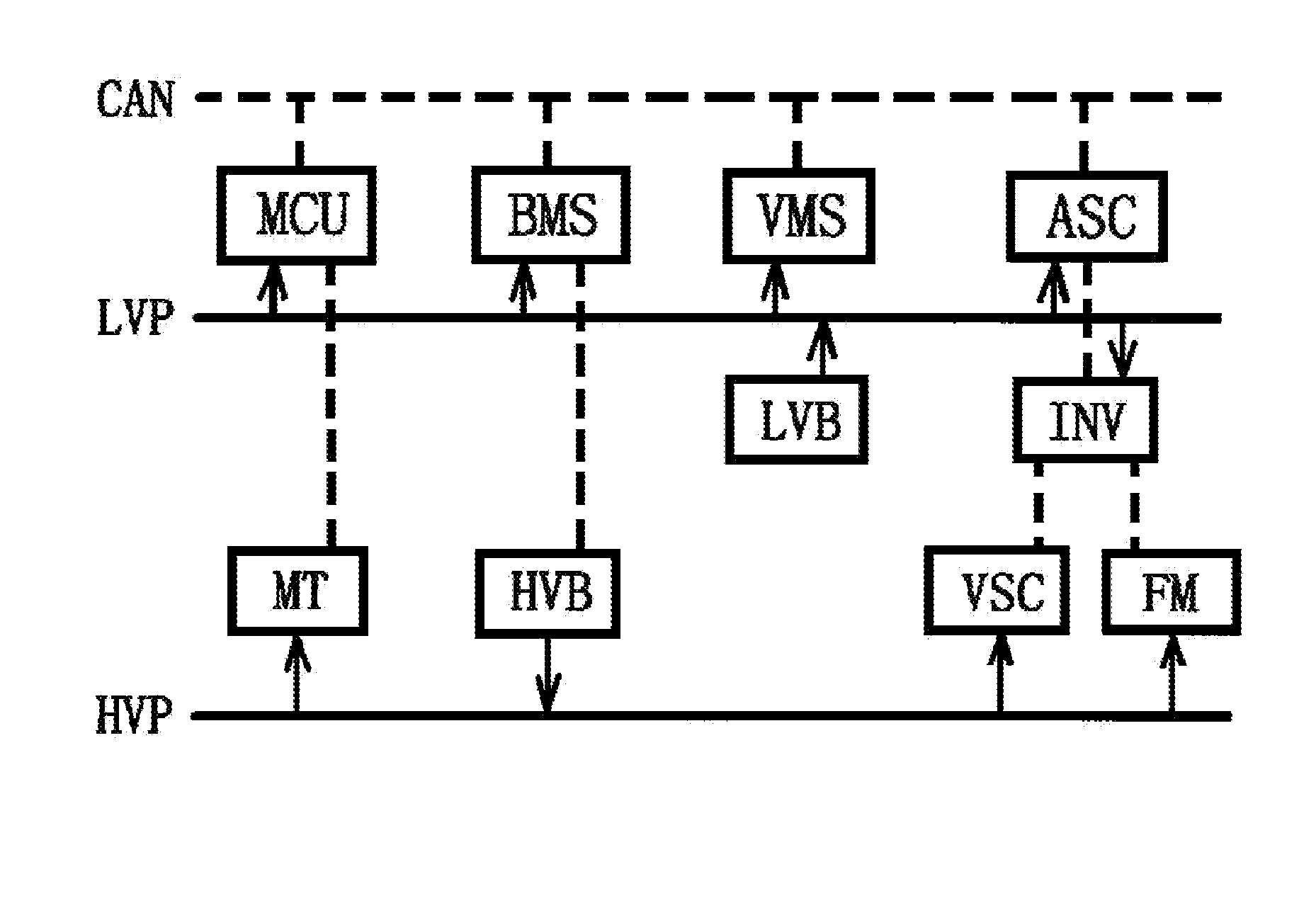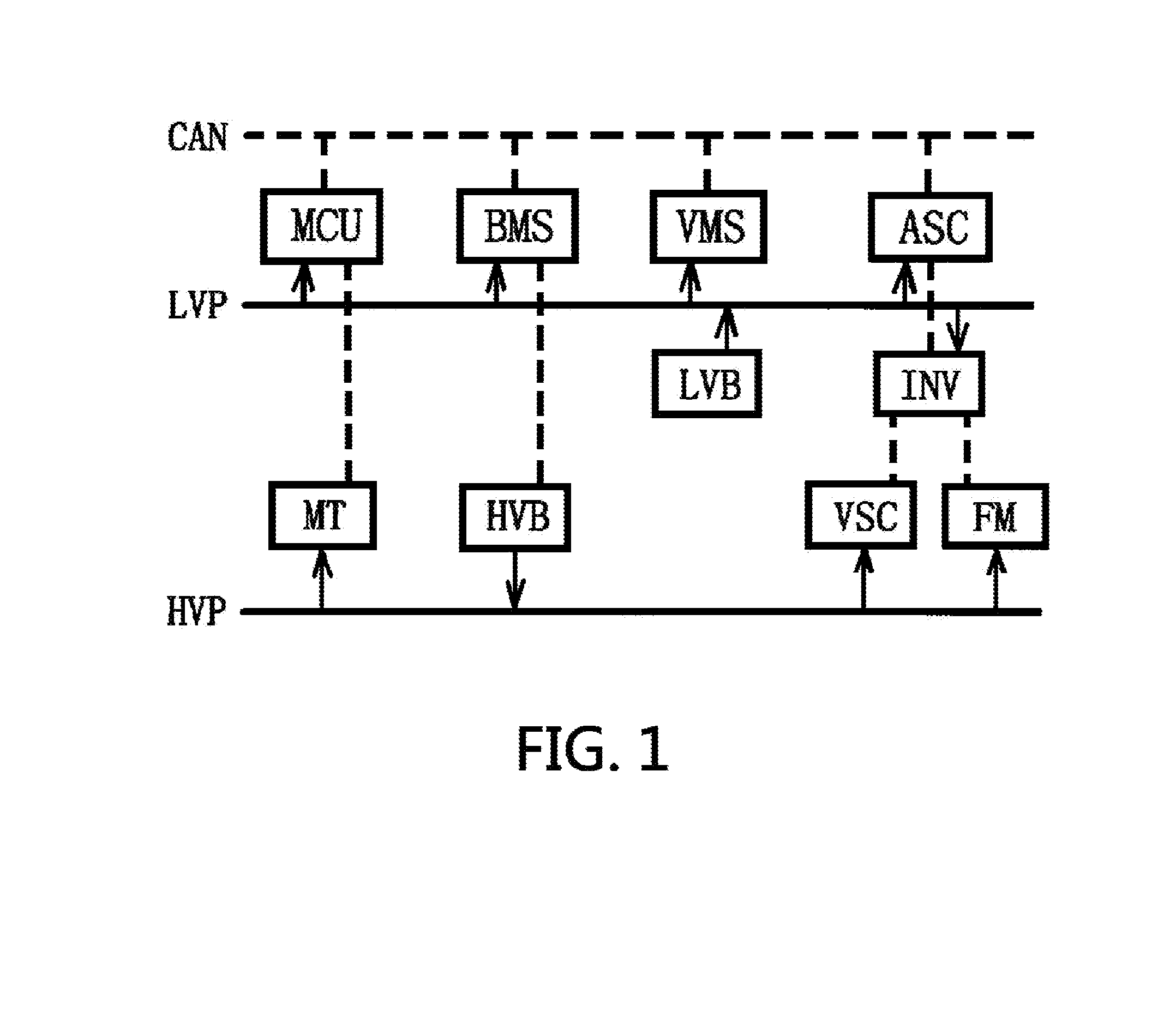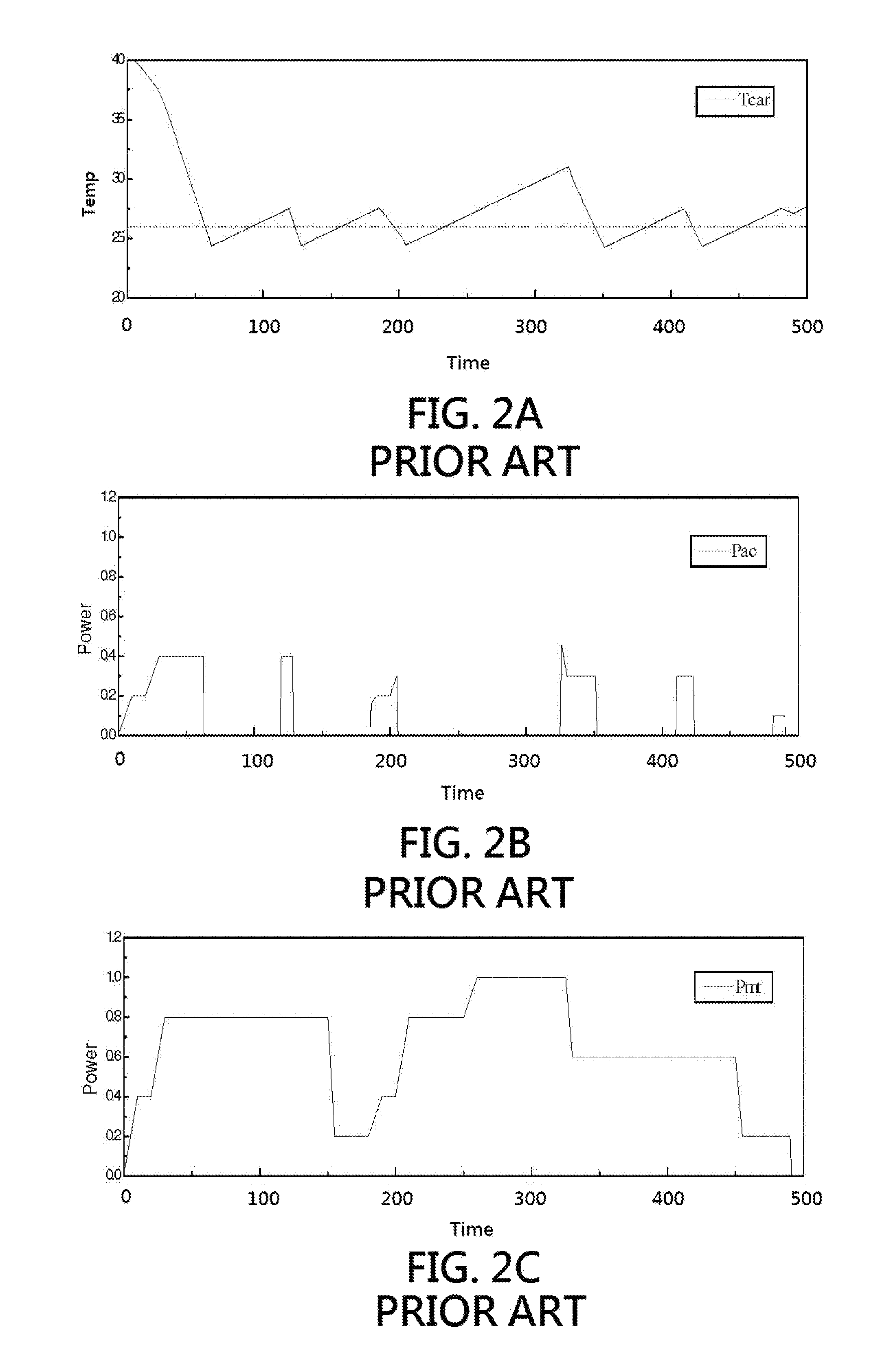Adaptive control method for air conditioning system of an electric car
- Summary
- Abstract
- Description
- Claims
- Application Information
AI Technical Summary
Benefits of technology
Problems solved by technology
Method used
Image
Examples
Embodiment Construction
[0034]The invention is an adaptive control method for air conditioning system of an electric car. The following description is directed to a preferred embodiment of the invention.
[0035]Referring to FIG. 1, a diagram of control system of the electric car of the invention is shown. It is noted that systems not essential to the invention are removed for the sake of brevity. Dotted lines represent communication or control signals connections and lines represent power connections. For the electric car, VMS is an acronym of vehicle monitoring system, MCU is an acronym of motor control unit, BMS is an acronym of battery monitoring system, ASC is an acronym of air conditioning system controller, MT is an acronym of motor, HVB is an acronym of high voltage battery, LVB is an acronym of low voltage battery, INV is an acronym of inverter, VSC is an acronym of variable speed compressor, FM is an acronym of fan motor, CAN is an acronym of campus area network, LVP is an acronym of low voltage pow...
PUM
 Login to View More
Login to View More Abstract
Description
Claims
Application Information
 Login to View More
Login to View More - R&D
- Intellectual Property
- Life Sciences
- Materials
- Tech Scout
- Unparalleled Data Quality
- Higher Quality Content
- 60% Fewer Hallucinations
Browse by: Latest US Patents, China's latest patents, Technical Efficacy Thesaurus, Application Domain, Technology Topic, Popular Technical Reports.
© 2025 PatSnap. All rights reserved.Legal|Privacy policy|Modern Slavery Act Transparency Statement|Sitemap|About US| Contact US: help@patsnap.com



